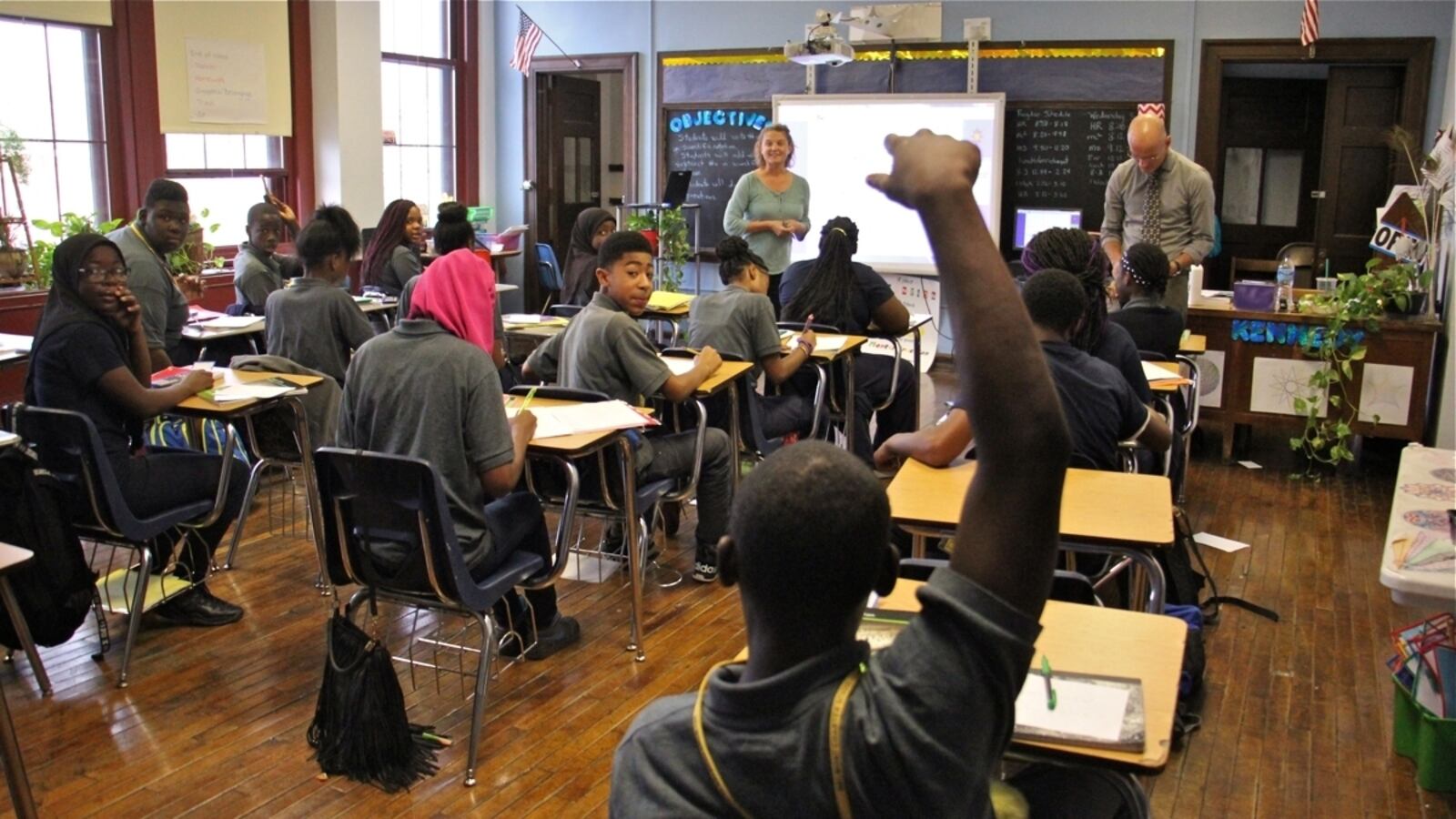This article was originally published in The Notebook. In August 2020, The Notebook became Chalkbeat Philadelphia.
A new study finds that expanding the charter school sector in Pennsylvania creates a significant toll on traditional public school systems, which, based on an array of fixed costs, can’t downsize at the same rate that students leave.
The report, written by the Philadelphia-based nonprofit Research for Action, delves into one of the central questions of Pennsylvania’s charter school debate.
The central finding here, though, is not new. Past studies of the issue in Pennsylvania and elsewhere have consistently found that charter schools pose a negative fiscal threat to traditional systems. But past efforts have often raised more questions than answers, as their methodologies were not presented openly and transparently.
RFA’s study is different because it offers a public tool that makes plain its assumptions and calculations, a tool designed to help school districts better understand and prepare for the effects of authorizing new charter school seats.
To understand the report, a little background is required.
When a student leaves a district school for a charter, most of the money allocated for that student is transferred to the charter school as a "tuition payment." But just because a district has one less student doesn’t mean it can easily save a corresponding amount of money. That difference — between the money that leaves and the actual savings realized — is known as a "stranded cost."
RFA says districts feel those stranded costs most acutely in the first year after a new charter expansion.
In the six Pennsylvania districts analyzed, RFA found that stranded costs ranged from about $8,000 to $17,000 per pupil in the first year, depending on the size of the district and the rate of charter growth.
"In order to maintain their own services at a relatively similar level, there’s limits to how much [districts] are able to cut," said David Lapp, director of policy at RFA.
Over time, the fiscal impact of those student departures is sharply reduced, but it remains substantial. Even five years down the road, RFA finds that no district comes close to breaking even.
"By year five in our fastest-growth scenario, districts will only be able to recoup between 44-68% of the cost of charter tuition for each student that leaves," said the report.
The study relies on analysis of the 2015-16 budgets of six different school districts across the state — small and large; rural, urban and suburban — projecting hypothetically five years into the future. The districts surveyed were: Philadelphia, Oxford Area (Chester County), Mahanoy (Schuylkill County), Central Bucks (Bucks County), South Western (York County), and Quaker Valley (Allegheny County).
RFA’s research stands out for a few reasons. Calculations were made using both short- and long-term outlooks, as well as at several varying rates of charter expansion. This variability, combined with the fact that RFA collaborated with a diverse set of school districts using actual budgets, gives the research a scope unseen in past efforts.

